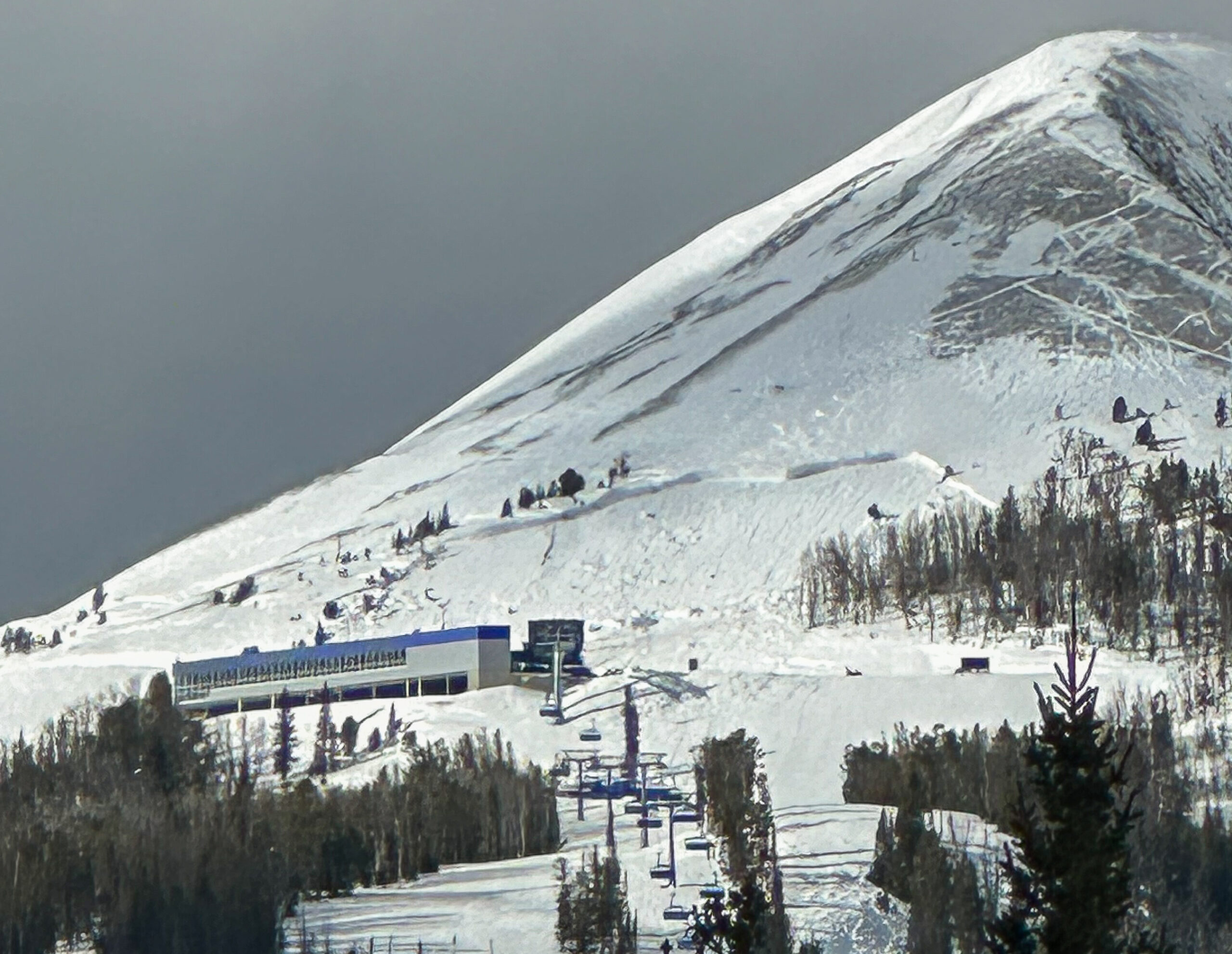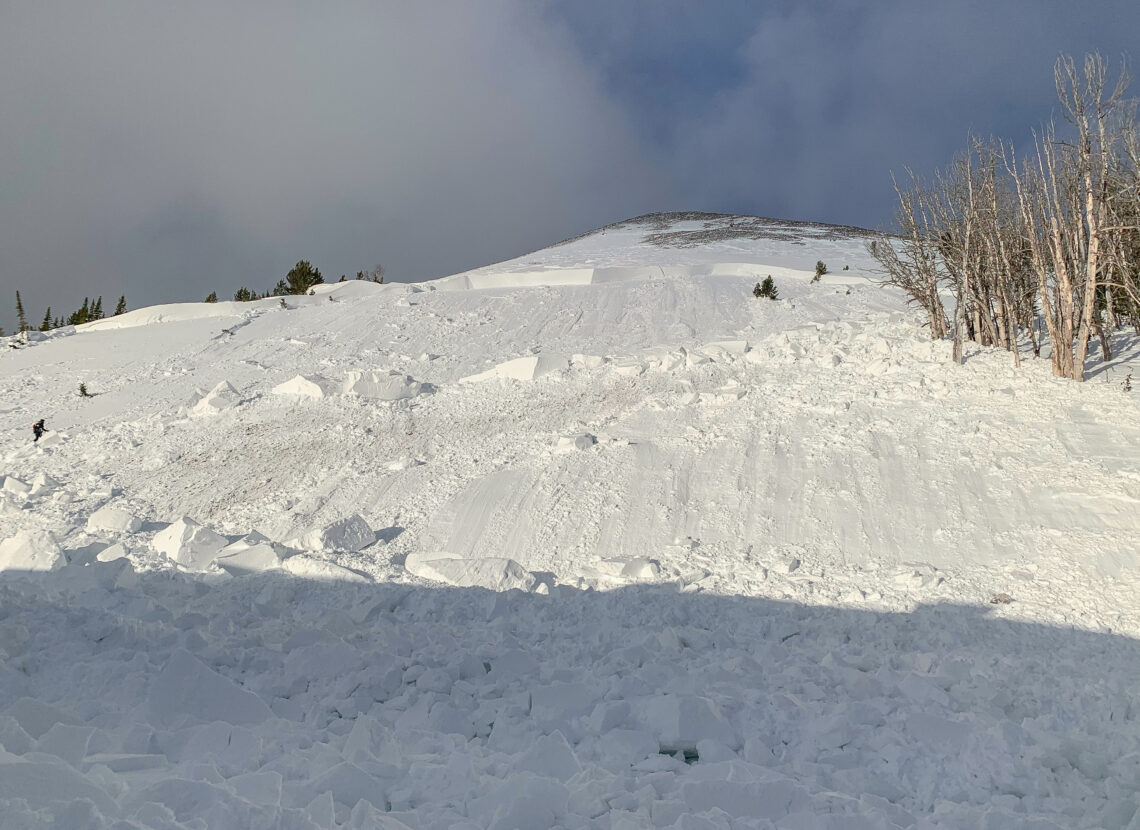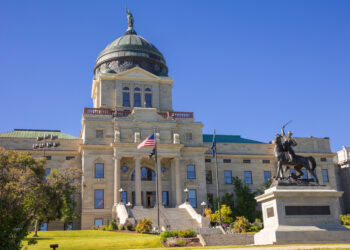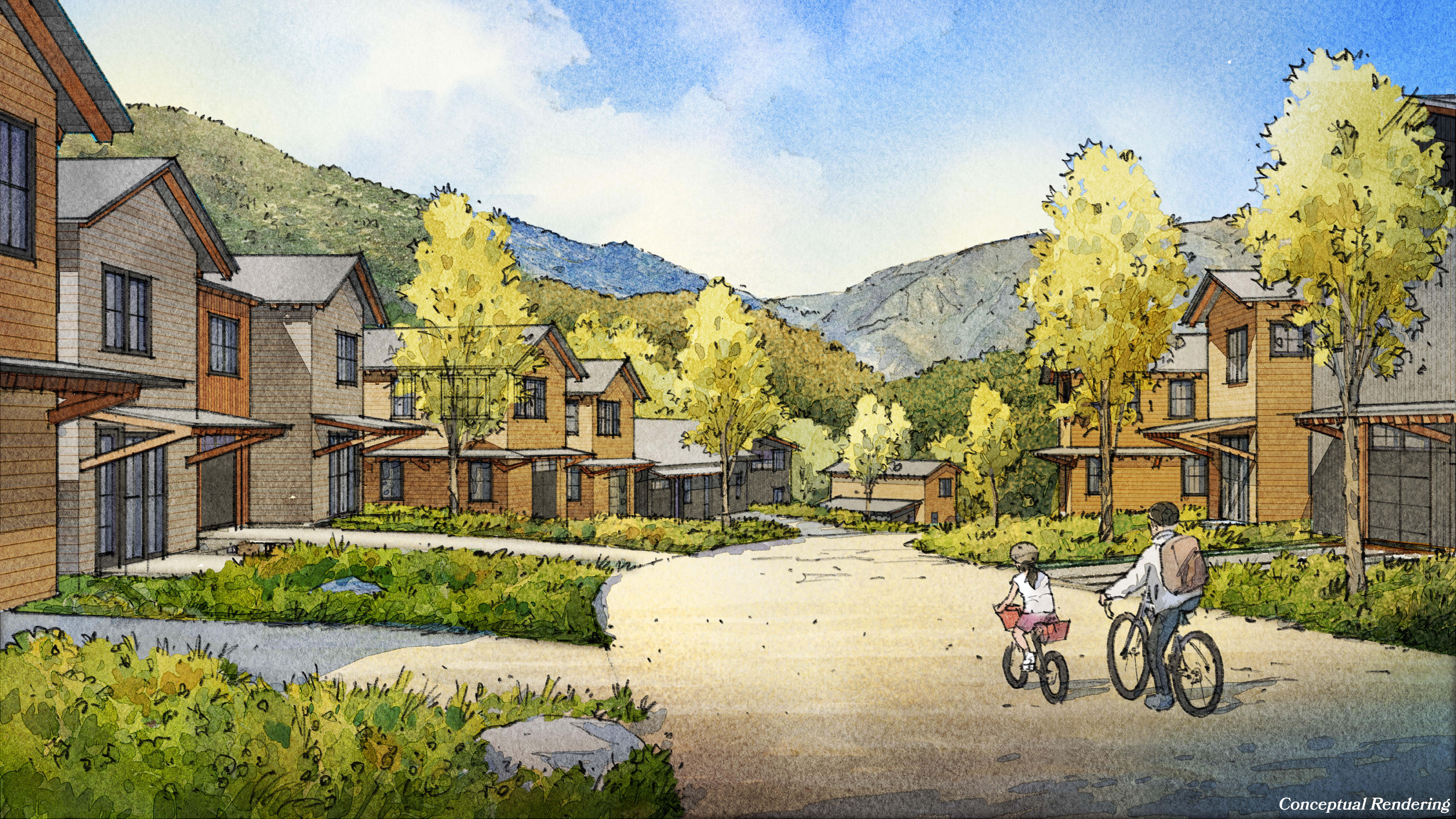No injuries reported; Swift Current 6 temporarily closed as crews remove snow from Bone Crusher slide
By Jack Reaney SENIOR EDITOR
On Wednesday morning, Feb. 5 around 8:30 a.m. before Big Sky Resort opened to the public, a sizable avalanche in the Bone Crusher area carried debris upon the top terminal of the Swift Current 6 chairlift, resulting in partial burial of the lift shack and uppermost chairs.
Big Sky Resort Ski Patrol triggered the slide using explosives as part of routine mitigation work. Per protocol, the lift was stopped before the explosive was detonated, according to a written statement from Big Sky Resort on Wednesday morning. The Bone Crusher area was wind-loaded by “significant wind averaging 65 mph on the summit of Lone Mountain” on Tuesday night before patrol mitigated the terrain.
The lift’s unloading area was covered in significant avalanche debris, and the lift will remain closed as mountain operations staff work to remove snow and conduct “a thorough lift evaluation,” according to the resort. Ski patrol immediately verified all team members were accounted for without injury, and conducted a rope evacuation of seven resort employees who had been riding the lift.
“This morning’s events reinforce why we conduct thorough avalanche mitigation work before opening to the public,” stated Tom Marshall, the resort’s general manager of mountain experience. “Our ski patrol and mountain operations teams executed their safety protocols while managing the situation professionally and efficiently.”

The resort thanked guests for their patience and understanding, and commended ski patrol and mountain operations teams for their “expert handling” of the situation, which will include significant work to remove snow.
Avalanche conditions ‘Considerable’ in backcountry
Dave Zinn, avalanche forecaster with the Gallatin National Forest Avalanche Center, told EBS in a phone call that wind has ramped up over the past several days in the backcountry forecast area including Big Sky area mountains. The wind has loaded some slopes, while stripping others nearly to the ground, he explained.
As of Feb. 4, avalanche danger is “Considerable” in the forecast area including Big Sky’s backcountry terrain—hazards are mitigated daily inside the boundaries of ski resorts like Big Sky Resort.
“We don’t recommend travel on those wind-loaded slopes,” Zinn said. While winds have blown predominantly from the west through south—which generally creates hazards on aspects from the north through east—swirling winds are common and can create wind drifts on all aspects. Backcountry users should keep an eye out for wind drifts anywhere.
“The big thing is that right now that both the better skiing and riding—and the better avalanche conditions—are going to happen on slopes that are sheltered from the wind,” Zinn said.
Explorers should target soft, fluffy powder without signs of wind, and in general, should avoid steep slopes to reduce risk of triggering an avalanche. He added that everyone should carry appropriate gear—beacon, shovel and probe, plus knowledge of how to use those tools—and should travel one at a time when crossing steeper slopes.
“When we go into the backcountry, interacting with avalanche terrain is a choice,” Zinn said. “And we can have a lot of fun on slopes that are less than 30 degrees.”













